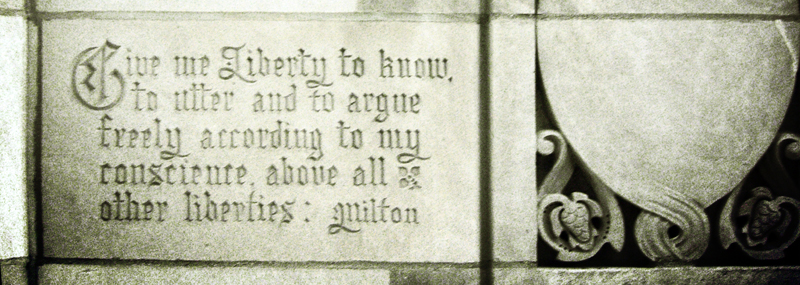Access Rules
By Charles Marler More »
The website for the Communication Law course at Abilene Christian University

Historical Context for Regulation of Broadcasting
1. Federal rationale for initiation of Interstate Commerce Commission under the Secretary of Commerce in 19th century was “public convenience, interest, or necessity.”
2. Radio Act of 1912 gave Secretary of Commerce limited authority to license radio operations.
3. World War I divided regulatory power between the Secretary of War and the Secretary of Commerce.
4. After World War I, rapid expansion of radio produced a largely unregulated era known as the Tower of Babel.
5. Radio Act of 1926 gave power to issue licenses, allocate frequencies and specify operating conditions to a Federal Radio Commission.
6. Communications Act of 1934 instituted current regula-tory structure and §303 included “public convenience, interest, or necessity” rationale. More »

1. Israel’s theocracy of the Old Covenant was extinguished by the death of the Messiah, who distinguished between earthly and spiritual kings. More »

Historical context of dawn of advertising regulation.
1. “Can both fresh water and salt water flow from the same spring?” (James 3:11).
2. Late 19th and early 20th century was age of reform.
3. Ads and porn usually seen same way – commercial speech.
4. Statutory reform signaled by Sherman Antitrust Act of 1890.
5. Political reform manifested in Progressivism.
6. Forces of Yellow Journalism of 1890s underlined excesses.
7. Modern advertising and marketing was taking form.
8. Roberson v. Rochester Box (1902) addressed privacy.
9. Pavesich v. N.Eng. Life (1905) led to appropriation tort.
10. Journalism reformers emerged as Muckrakers.
11. Ad reform was led by Printer’s Ink model statute of 1911.
12. Clayton Act of 1914 was coupled with Sherman Act.
13. Federal Trade Commission Act of 1914 signaled new age.
14. National Vigilance Committee (BBB parent) began in 1915. More »

1. Students and teachers do not shed their First Amendment rights at the schoolhouse gate (Tinker v. Des Moines ICSD, 1968). Only a clear threat to a school’s abilility to orderly carry out its educational mission can be prohibited. More »

1. The tort is: (a) a printed, spoken or non-verbal message, (b) communicated to a third party, (c) which because of fault (actual malice or reckless disregard of truth or failure to exercise reasonable care or, in the case of a private person, negligence) (d) brings person into hatred, contempt or ridicule, (e) in eyes of a substantial, respectable group. More »

This quote from John Milton can be found on the outside of the Chicago Tribune building.